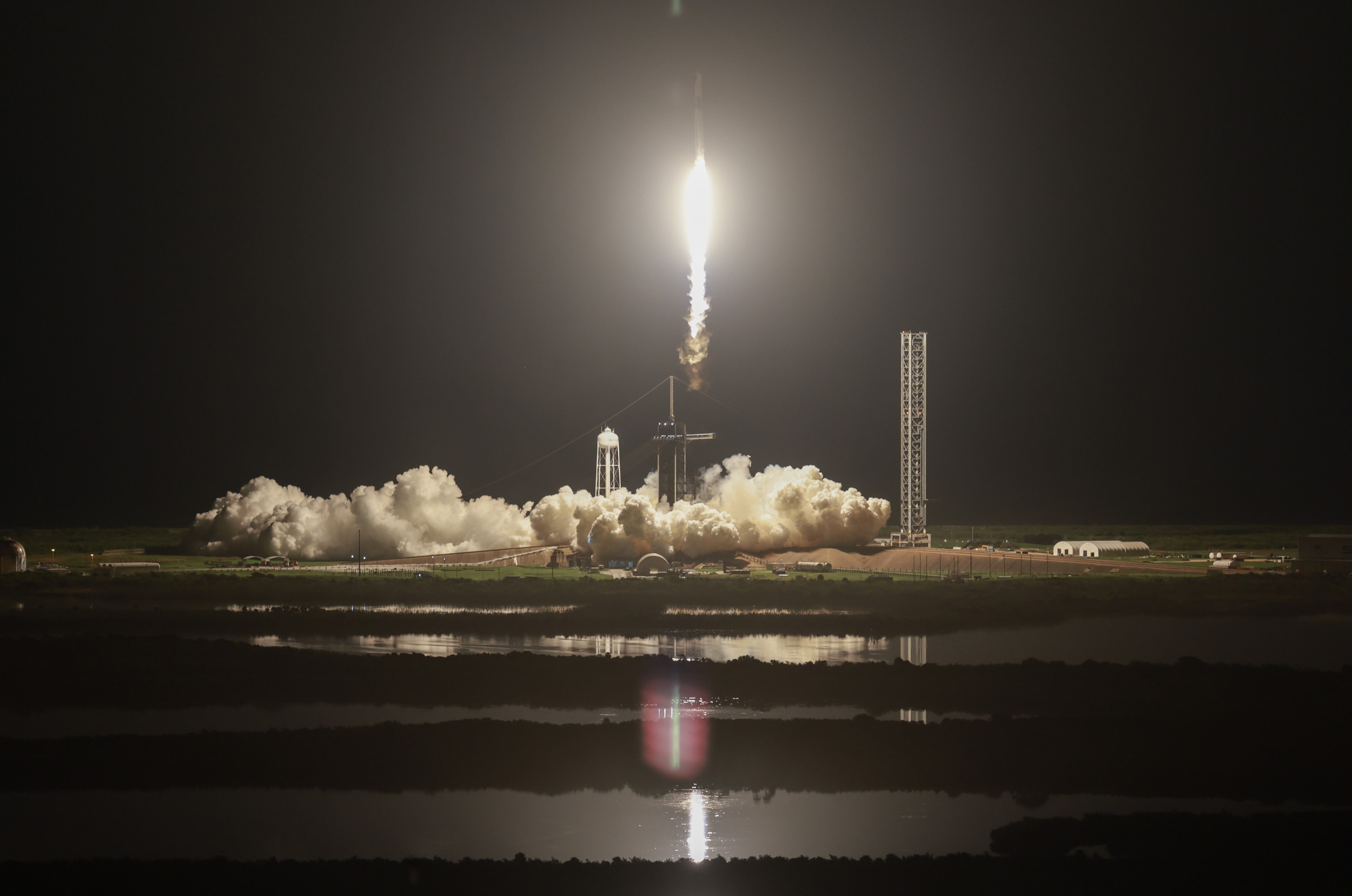World
SpaceX launches world’s first private spacewalk mission

In the early hours of Tuesday morning, SpaceX launched a rocket taking four civilians into space to conduct the first private company spacewalk.
The Polaris Dawn mission launched atop a SpaceX Falcon 9 rocket at 5:23 a.m. ET from Launch Complex 39A at NASA‘s Kennedy Space Center in Florida, with four civilians inside a SpaceX Crew Dragon capsule named Resilience.
The crew, led by Shift4 Payments CEO and billionaire Jared Isaacman—who purchased three missions from SpaceX as part of his Polaris Program, a human spaceflight effort—aims to take people the farthest from Earth since the Apollo program and send the first civilians into the abyss of space on a spacewalk.
Joe Raedle/Getty Images
The rest of the crew consists of Scott Poteet, a retired U.S. Air Force pilot, and SpaceX space operations engineers Sarah Gillis and Anna Menon.
“This Dragon mission will take advantage of Falcon 9 and Dragon’s maximum performance, flying higher than any Dragon mission to date and endeavoring to reach the highest Earth orbit ever flown,” Polaris Dawn says, describing the mission’s objective on its website.
It continues: “At approximately 700 kilometers above the Earth, the crew will attempt the first-ever commercial extravehicular activity (EVA) with SpaceX-designed extravehicular activity (EVA) spacesuits, upgraded from the current intravehicular (IVA) suit.”
The rocket blasted off into orbit around the Earth, hitting 17,000 miles per hour, which is the planet’s orbital velocity. The multiday mission will be spent orbiting the Earth at increasingly greater distances from the planet.

In its first few orbits, the capsule will orbit in an oval shape, with a maximum distance of about 745 miles above the surface. The capsule will slowly increase the distance of this maximum point—known as apogee—to 870 miles, which is a little farther than the 853-mile-orbit record set by the 1966 Gemini 11 mission. This will also mark the farthest humans have flown from Earth since the end of the Apollo missions, which sent humans to the moon, and also the farthest a woman has ever traveled into space—for now.
During this time, the craft will enter one of Earth’s Van Allen radiation belts, which capture and trap energetic particles from the sun and cosmic rays. This area of space is therefore teeming with radiation.
The craft will reduce the size of its orbit on its second day, dropping back to a maximum of about 435 miles from Earth. On its third day in orbit, the first-ever private spacewalk, or EVA, will occur. While only Isaacman and Gillis will fully exit the spacecraft, all four crew members will be suited up and exposed to the vacuum of space since the capsule does not have an airlock. The EVA will last around two hours and will test the functionality of SpaceX’s new EVA spacesuits. This will also break the record for the most people in the vacuum of space at the same time.
The mission was initially meant to blast off in late August, but this was stymied by not ideal weather conditions and technical problems with the launch tower. The launch Tuesday morning was also delayed by two hours because of bad weather, but eventually the capsule was launched into orbit.
Six days after liftoff, the capsule will reenter the atmosphere, and parachute back into the ocean off the coast of Florida. This step also requires ideal weather conditions.
“We wouldn’t be on this journey without all 14,000 of you back home and everyone else cheering us on,” Isaacman told SpaceX mission control shortly after Crew Dragon entered orbit. “We appreciate it. We’re gonna get to work now.”
Do you have a tip on a science story that Newsweek should be covering? Do you have a question about space? Let us know via science@newsweek.com.










